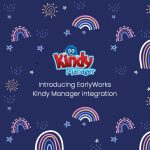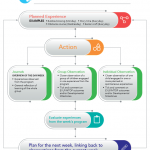The Modern Planning Cycle – Is it really that different?
We’re probably all guilty of it, you know, reminiscing about how things were so much better “in our day”. For those of us that have entered the era of the “Planning Cycle” from a more traditional pre-planning approach, this post is for you.
Okay. You’ve been in the business of early childhood education for longer than you care to admit, and the EYLF feels like just another ‘fad’ that will pass. You might even feel like your understanding of programming and what constitutes curriculum is at odds with the NQS, EYLF, etc. At a glance, it might even appear as though somehow “proper” planning has become thing of the past.
Back in the day, many of us would have made detailed plans, describing in great detail the activities we would use to achieve prescribed learning objectives. Then we would work our way through these programs, ticking off the objectives as we went.
The good news is, we can still make detailed plans, however our planning is informed not only by understanding of child development and learning objectives, but also by gathering rich information about families, children, and community context.
The NQF planning cycle provides a structure through which curriculum can be developed. And that curriculum is informed by our theoretical understanding of how children learn and develop, our observations and reflections of children’s learning, and our context.
I guess the key difference to ‘how things used to be done around here’ (and I think it’s a good one) is we are given license to respond to spontaneous moments of play and learning. Back in the day, we might have felt restricted by what was already in our program. Now we have license to plan according to real time observations of children’s interests, learning and development.







